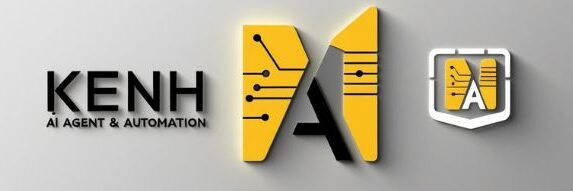How MCP Powers the Smartest AI Tools of 2025
AI in 2025 is not just faster—it’s smarter, more collaborative, and fully autonomous. The key to this intelligence isn’t just bigger models. It’s architecture—and at the heart of that architecture is the MCP Framework.
MCP (Multi-agent Collaborative Process) enables AI systems to operate like orchestrated teams instead of disconnected tools. It’s the invisible backbone powering the most advanced AI tools today—from Claude AI to GPT-4.5, and autonomous agents like AutoGPT.
In this article, we’ll unpack how MCP works, why it matters, and how it’s changing everything about how we build, scale, and interact with AI.
1. The Rise of AI Agents: From Tools to Teammates
In today’s business world, AI Agents are redefining roles and workflows. These agents are:
Autonomous: Operate without continuous human oversight
Collaborative: Interact with other agents and humans
Context-aware: Understand tasks across time and platforms
Goal-driven: Act based on strategic objectives, not just scripts
Whether managing support tickets, creating content, or analyzing data, AI Agents are becoming digital teammates—and MCP is how they work together efficiently.
2. Workflow Automation: Beyond Linear Logic
AI is taking automation from static if-this-then-that rules to dynamic, self-adjusting workflows. These new workflows can:
Adjust based on real-time data
Assign subtasks to different agents
Coordinate execution across tools and systems
Learn from previous outcomes and improve
Example: A marketing campaign today may be fully orchestrated by AI:
Claude AI → Researches audience behavior
GPT-4.5 → Drafts content & emails
AutoGPT → Publishes, schedules, and optimizes for SEO
Analytics Agent → Tracks performance and refines future actions
All of this is possible because of MCP.
3. What is the MCP Framework?
Definition
MCP (Multi-agent Collaborative Process) is a system architecture that allows multiple AI agents to collaborate on shared tasks, communicating through structured protocols, memory states, and goal hierarchies.
Key Characteristics
Role-based structure: Each agent has a unique role and skillset
Shared memory: Agents can access shared states to stay contextually aware
Task orchestration: Tasks are divided and delegated based on capacity
Feedback loops: Agents can evaluate and learn from each other’s outputs
It’s like giving each AI tool a seat at the table—and a job title.
4. Why MCP Is Critical for the Smartest AI Tools
Claude AI: Semantic Collaboration
Claude excels at contextual reasoning and memory management. When deployed inside an MCP system, Claude becomes a strategic analyst that:
Understands multi-turn dialogue across projects
Coordinates with creative agents like GPT
Validates tone, facts, and ethical alignment
With MCP, Claude isn’t a one-off prompt tool—it’s part of an intelligent feedback loop.
GPT-4.5: The Content & Code Powerhouse
GPT-4.5 delivers high-quality output—but by itself, it doesn’t know when or why to act. Inside an MCP structure:
It receives assignments from a Planning Agent
It sends drafts to a Review Agent for feedback
It adapts its outputs based on team memory and priorities
GPT-4.5 becomes reactive + proactive, improving both speed and relevance.
AutoGPT: The Orchestrator
AutoGPT is the execution layer. It handles:
Task decomposition
Plugin and API interaction
Data fetching and validation
Goal tracking
Plugged into MCP, AutoGPT doesn’t act alone. It coordinates with Claude for context and with GPT-4.5 for content—forming a self-operating agent network.
5. Real-World Use Case: Smart Content Operations
Company Goal: Publish 100 SEO blog posts/month with minimal human input.
MCP Workflow:
Trend Agent (Claude) → Analyzes audience and competitors
Outline Agent (GPT-4.5) → Generates detailed H1–H3 structure
Writer Agent (GPT-4.5) → Drafts article content
Editor Agent (Claude) → Checks tone, grammar, factual accuracy
SEO Agent (AutoGPT) → Adds metadata, links, schema
Publish Agent → Uploads to WordPress & shares to social media
Analytics Agent → Tracks CTR, bounce rate, keyword rank
Output: 100+ high-quality posts/month with just one content manager in oversight.
6. Why Businesses Are Moving to MCP-Enabled AI
| Benefit | Traditional AI Tools | MCP-Based AI Systems |
|---|---|---|
| Workflow Automation | Limited | Fully integrated |
| Scalability | Manual scaling required | Self-scaling via agent logic |
| Adaptability | Static output | Dynamic, real-time adjustment |
| Collaboration | One-tool output | Team-based multi-agent output |
| Efficiency | Sequential | Parallel + optimized processes |
7. The Future of AI: Decentralized Intelligence
MCP is ushering in a future where:
AI teams run departments: Sales, HR, Content
Agents report to humans like virtual employees
Systems can self-heal, self-improve, and self-deploy
Custom MCP networks become a competitive edge
With modular, MCP-driven agents, businesses aren’t using AI tools—they’re building intelligent systems.
Keywords to Target for SEO
To ensure discoverability, integrate these throughout the post and metadata:
MCP AI architecture
Best AI tools 2025
Claude AI and GPT-4.5 integration
Multi-agent AI system
AI workflow automation
AI agents for business
AutoGPT orchestration
Final Thoughts: MCP Is the Operating System of AI 2.0
While the spotlight is often on models like GPT-4.5 or Claude, MCP is what makes them useful at scale. It’s not just the intelligence of individual agents that matters—it’s their ability to work together.
Whether you’re a startup or an enterprise, adopting MCP means you’re not just using AI—you’re building a smart, self-operating organization.
CTA: Want to unlock the full power of intelligent AI agents for your business?
👉 Explore MagicLight’s AI Solutions and see how MCP-powered systems can transform your workflow.
